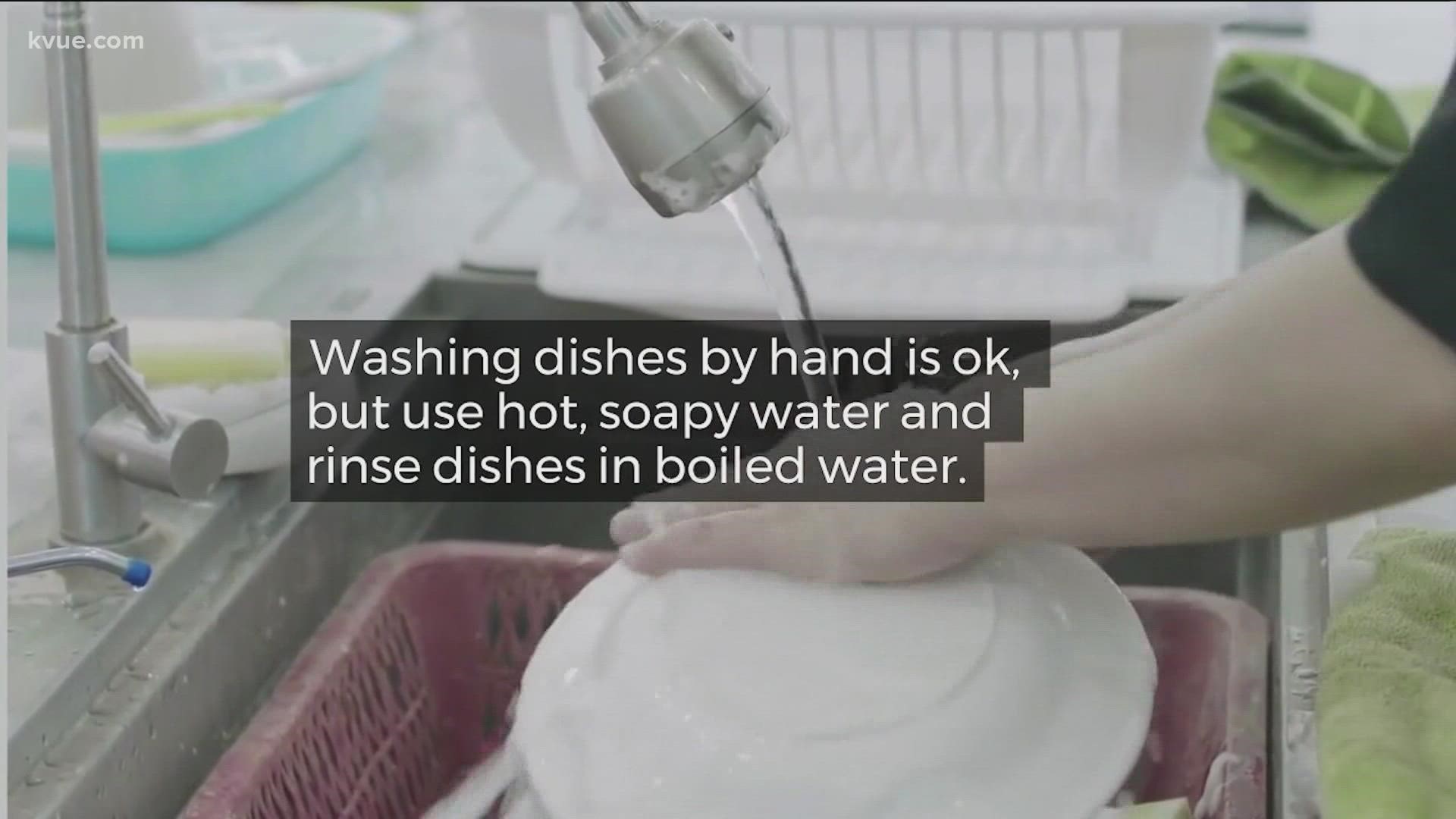AUSTIN, Texas — On Saturday evening, a boil water notice was issued across the city of Austin after an issue at the Ullrich Water Treatment Plant resulted in high turbidity.
As of Monday, the notice is still in place, with officials aiming for Tuesday for lifting. Thus, Austin Water customers are still asked to boil their water vigorously for at least two minutes before drinking or cooking.
Customers are also asked not to:
- Use water for irrigation or testing of irrigation equipment
- Wash vehicles, including at a commercial car wash
- Wash pavement or other surfaces
- Add water to a pool or spa
- Conduct foundation watering
- Operate an ornamental fountain or pond, other than aeration necessary to support aquatic life
The City of Austin has also answered a list of frequently asked questions. Check them out below:
As a precaution, Austin Water can request that customers boil their water or use bottled water until water sample lab test results become available.
A boil water notice is a public statement advising people to boil their tap water before using it, typically in response to an event that has (or could have) introduced contaminants into the water distribution system. Such events include a large water main break, widespread loss of system pressure, or results of routine sample testing in the system. Although waterborne diseases are extremely rare, they can be serious. The risk is higher for infants, the elderly and persons with immune deficiency disorders. Austin Water issues boil-water notices even if the possibility of contamination is remote to safeguard the health of the community.
You should boil tap water vigorously for at least two minutes prior to using it for drinking or cooking (the minute starts when the water begins to bubble). This includes water used for brushing teeth, making ice, washing raw foods, preparation of drinks and water for pets. Wait for the water to cool before using it or store it in the refrigerator in a clean container. Boiling removes harmful bacteria in the water that may cause illness. You should throw away ice made during the time the advisory or notice was issued, as freezing does not kill bacteria.
The water is safe for washing dishes, but you should use hot, soapy water (you may add one tablespoon of bleach per gallon as a precaution) and rinse dishes in boiled water. Household dishwashers generally are safe to use if the water reaches a final rinse temperature of at least 150 degrees Fahrenheit (65.55°Celsius), or if the dishwater has a sanitizing cycle.
There are no restrictions on doing laundry.
During a boil water notice, you can use tap water and soap to wash hands. Be sure to scrub your hands with soap and water for at least 20 seconds and rinse well under running water. If soap and water are not available, use an alcohol-based hand sanitizer that contains at least 60% alcohol.
While you can use tap water for bathing and showering, be careful not to swallow any water. Use caution when bathing babies and young children. Consider giving them a sponge bath to reduce the chance of them swallowing water.
Brush teeth with previously boiled or bottled water. Do not use untreated tap water.
Use boiled or bottled water only for drinking, cooking, making ice, washing fruits and vegetables, brushing teeth, making baby formula, bathing and cleaning.
Breast feed your baby or use ready-made formula. If you must use water to make formula, use bottled water. If you don’t have bottled water, use water that has been rapidly boiled for at least two (2) minutes.
You should follow the same boiling water procedures for your pet as you would for yourself.
Public notification will be given when a boil water notice or order is lifted. Typically the need to boil water lasts for 24 to 48 hours, but can be longer and may last for several days or more. How long will depend on the conditions that caused the need to boil, how quickly the conditions are corrected, and how long it takes for laboratory results to confirm it is safe to return to normal water use. Austin Water will provide updates on the progress of corrective actions and how long the event is expected to last.
When it is no longer necessary to boil the water, Austin Water will notify you that the water is safe for consumption. You should flush household pipes, ice makers, water fountains, etc. prior to using for drinking or cooking. Flushing simply means letting the water run to ensure that there is fresh water flowing through your pipes. Follow the following guidelines for flushing:
- Run all cold water faucets in your home for one minute
- To flush automatic ice makers, make three batches of ice and discard
- Run water softeners through a regeneration cycle
A milky appearance in the water typically indicates that there is air in the water. If let a glass of water sit, you'll notice the bubbles will disperse and clear up. It also can be common for calcium deposits or sediment to show up when your water service returns. Austin Water recommends that customers flush their plumbing lines by running the bathtub faucet for two minutes. If the cloudy appearance persists after you’ve flushed your plumbing lines, please report the issue using Austin Water’s online form or by calling 512-972-1000.
Customers do not need to independently have their water tested at their tap, nor does Austin Water hire individuals to solicit at-home water sampling. The Boil Water Notice will be rescinded when the results from the Austin's drinking water testing is in full compliance with national and state drinking water standards with no violations of listed contaminants. These tests are taken from various locations throughout the system that are approved by the Texas Commission on Environmental Quality.
PEOPLE ARE ALSO READING:

